
CSA BOX CONTENTS WEEK OF NOV 25TH
11/26/19 — Scott
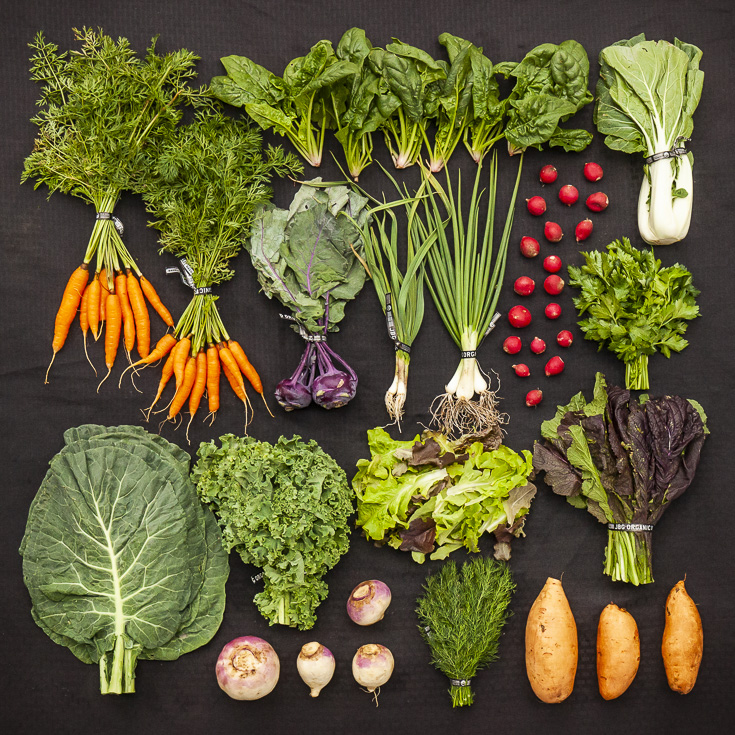 CSA Box Contents Week of Nov 25th
CSA Box Contents Week of Nov 25th
Large Box
Bok Choy
Broccoli
Cabbage
Carrots X 2
Farmers Choice
Greens, Kale, Curly
Greens, Spinach
Herb, Cilantro
Onion, Multiplying
Radish
Turnip, Rutabaga
Bok Choy
Broccoli
Cabbage
Carrots X 2
Farmers Choice
Greens, Kale, Curly
Greens, Spinach
Herb, Cilantro
Onion, Multiplying
Radish
Turnip, Rutabaga
Medium Box
Bok Choy
Broccoli
Carrot, Orange
Farmers Choice
Greens, Kale, Curly
Herb, Cilantro
Lettuce, Romaine
Onion, Multiplying
Radish
Turnip, Rutabaga
Bok Choy
Broccoli
Carrot, Orange
Farmers Choice
Greens, Kale, Curly
Herb, Cilantro
Lettuce, Romaine
Onion, Multiplying
Radish
Turnip, Rutabaga
Small Box
Bok Choy
Carrot, Orange
Greens, Kale, Curly
Herb, Dill
Lettuce, Romaine
Radish
Turnip, Rutabaga
Bok Choy
Carrot, Orange
Greens, Kale, Curly
Herb, Dill
Lettuce, Romaine
Radish
Turnip, Rutabaga
Individual Box
Carrot, Orange
Greens, Kale, Curly
Greens, Mustard
Greens, Spinach
Herb, Cilantro
Turnips
Carrot, Orange
Greens, Kale, Curly
Greens, Mustard
Greens, Spinach
Herb, Cilantro
Turnips
PHOTOS FROM THE FARM: 11.22.19
11/22/19 — Ada Broussard
This week at JBG, farm photographer Scott as well as our entire farm crew, were thankful for milder weather. Fall is truly such a bountiful time in Central Texas, and while trees in our area don't put on as much of a fall show as in other parts of the country, our lettuces sure to sport some beautiful fall hues.
![]() Nothing like beautifully prepped beds before the sun has fully peeked out. Photo by Scott David Gordon.
Nothing like beautifully prepped beds before the sun has fully peeked out. Photo by Scott David Gordon.
![]() Spinach is coming in nicely. Photo by Scott David Gordon.
Spinach is coming in nicely. Photo by Scott David Gordon.
![]() Rows of nutritious spinach being cut by hand and inspected by harvest manager, Vicente. Photo by Scott David Gordon.
Rows of nutritious spinach being cut by hand and inspected by harvest manager, Vicente. Photo by Scott David Gordon.
![]() A single shining cilantro leaf. Photo by Scott David Gordon.
A single shining cilantro leaf. Photo by Scott David Gordon.
![]() Freshly harvested greens equates to better flavor and better nutrition. Photo by Scott David Gordon.
Freshly harvested greens equates to better flavor and better nutrition. Photo by Scott David Gordon.
![]() Bunch, cut, bag, repeat. Ideally on a cool misty morning. Photo by Scott David Gordon.
Bunch, cut, bag, repeat. Ideally on a cool misty morning. Photo by Scott David Gordon.
![]() Our version of fall foliage. Photo by Scott David Gordon.
Our version of fall foliage. Photo by Scott David Gordon.
![]() Photo by Scott David Gordon.
Photo by Scott David Gordon.
![]() Might we suggest you make a salad. Photo by Scott David Gordon.
Might we suggest you make a salad. Photo by Scott David Gordon.
![]() Verdant fields. Photo by Scott David Gordon.
Verdant fields. Photo by Scott David Gordon.
![]() Gradients of greens. And purples. Photo by Scott David Gordon.
Gradients of greens. And purples. Photo by Scott David Gordon.
![]() Photo by Scott David Gordon.
Photo by Scott David Gordon.
![]() Last but not least, the kale. Photo by Scott David Gordon.
Last but not least, the kale. Photo by Scott David Gordon.
 Nothing like beautifully prepped beds before the sun has fully peeked out. Photo by Scott David Gordon.
Nothing like beautifully prepped beds before the sun has fully peeked out. Photo by Scott David Gordon.
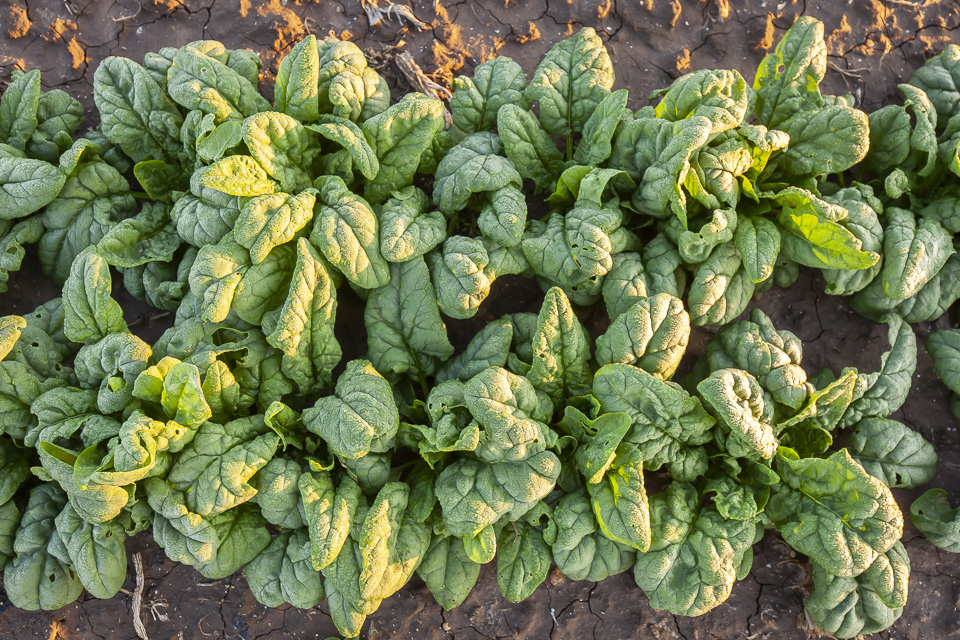 Spinach is coming in nicely. Photo by Scott David Gordon.
Spinach is coming in nicely. Photo by Scott David Gordon.
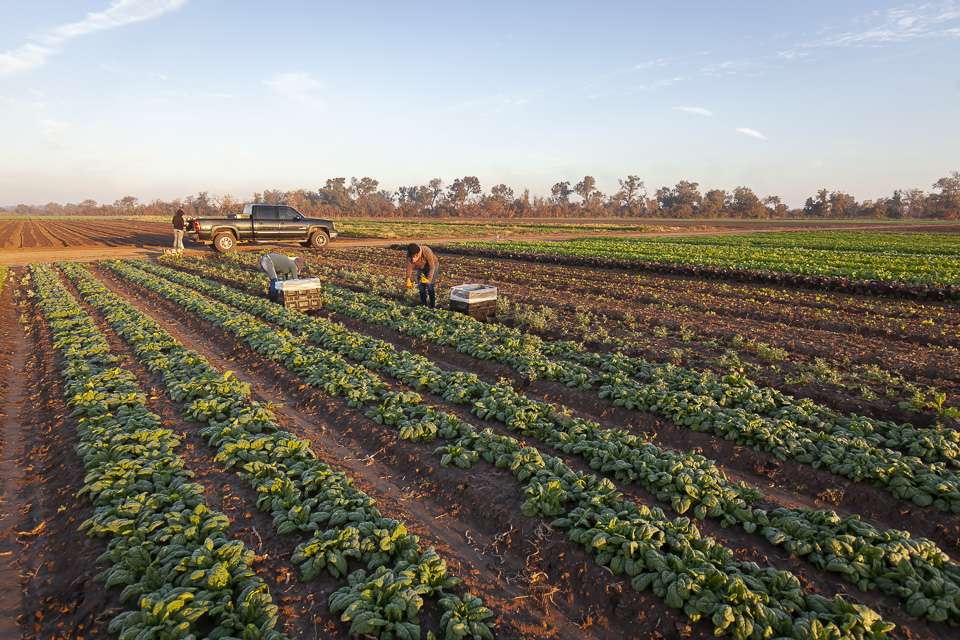 Rows of nutritious spinach being cut by hand and inspected by harvest manager, Vicente. Photo by Scott David Gordon.
Rows of nutritious spinach being cut by hand and inspected by harvest manager, Vicente. Photo by Scott David Gordon.
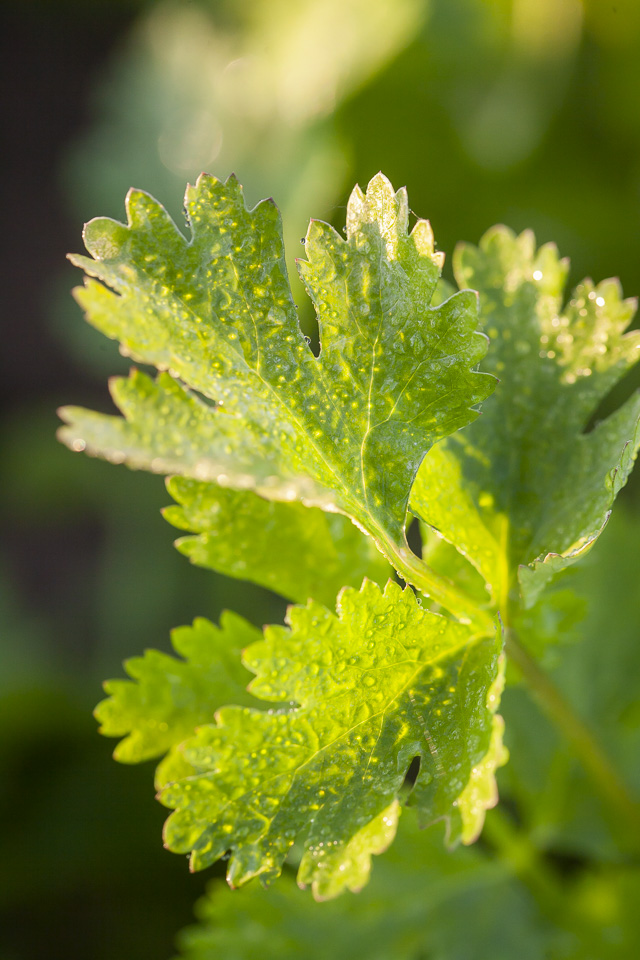 A single shining cilantro leaf. Photo by Scott David Gordon.
A single shining cilantro leaf. Photo by Scott David Gordon.
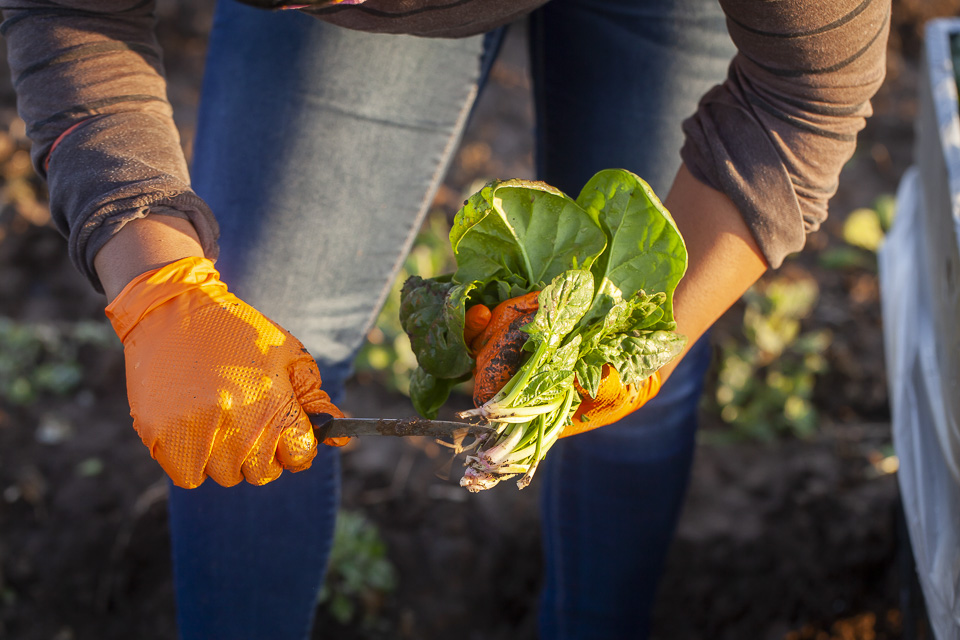 Freshly harvested greens equates to better flavor and better nutrition. Photo by Scott David Gordon.
Freshly harvested greens equates to better flavor and better nutrition. Photo by Scott David Gordon.
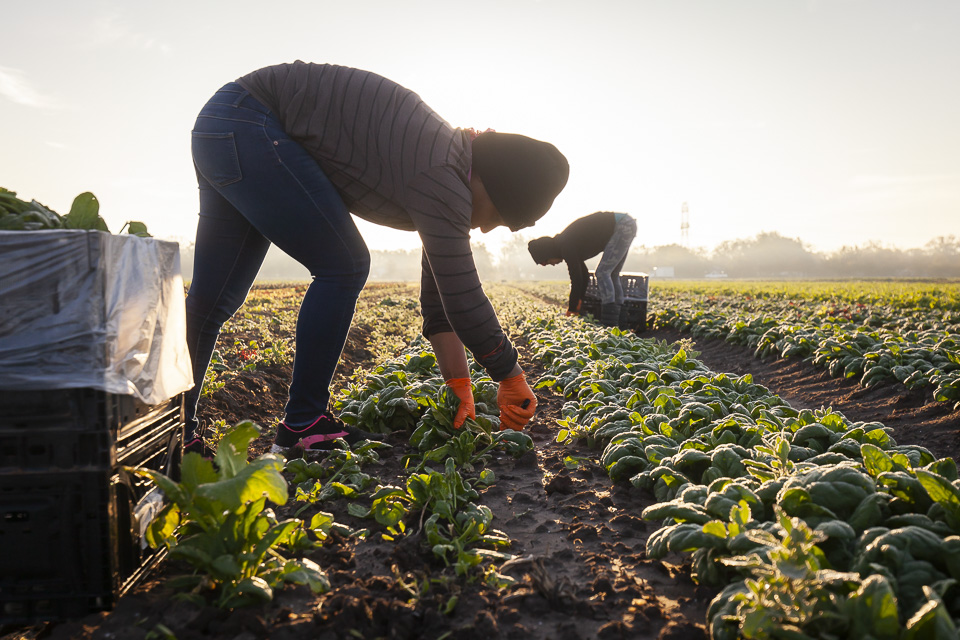 Bunch, cut, bag, repeat. Ideally on a cool misty morning. Photo by Scott David Gordon.
Bunch, cut, bag, repeat. Ideally on a cool misty morning. Photo by Scott David Gordon.
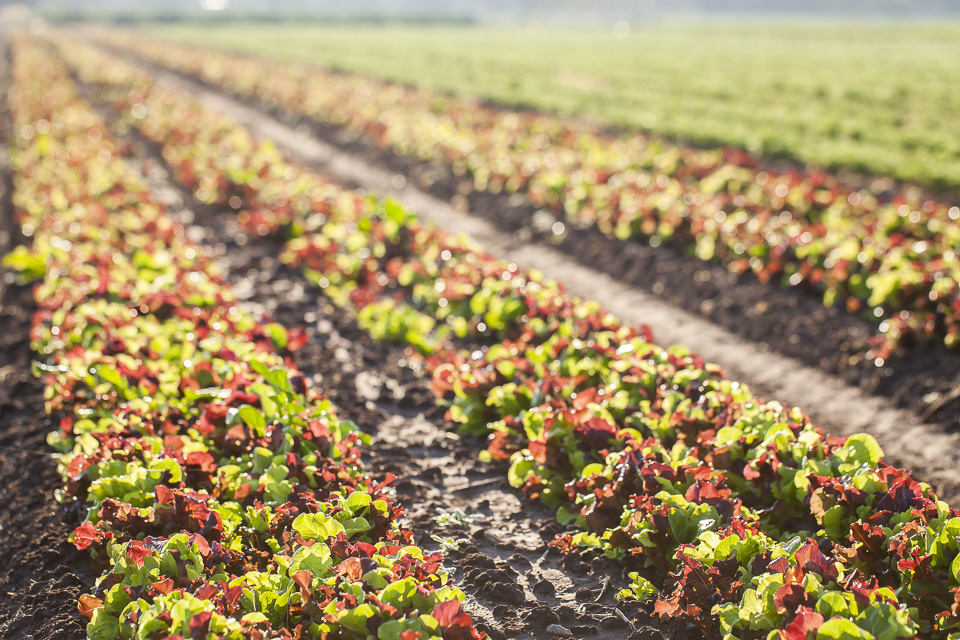 Our version of fall foliage. Photo by Scott David Gordon.
Our version of fall foliage. Photo by Scott David Gordon.
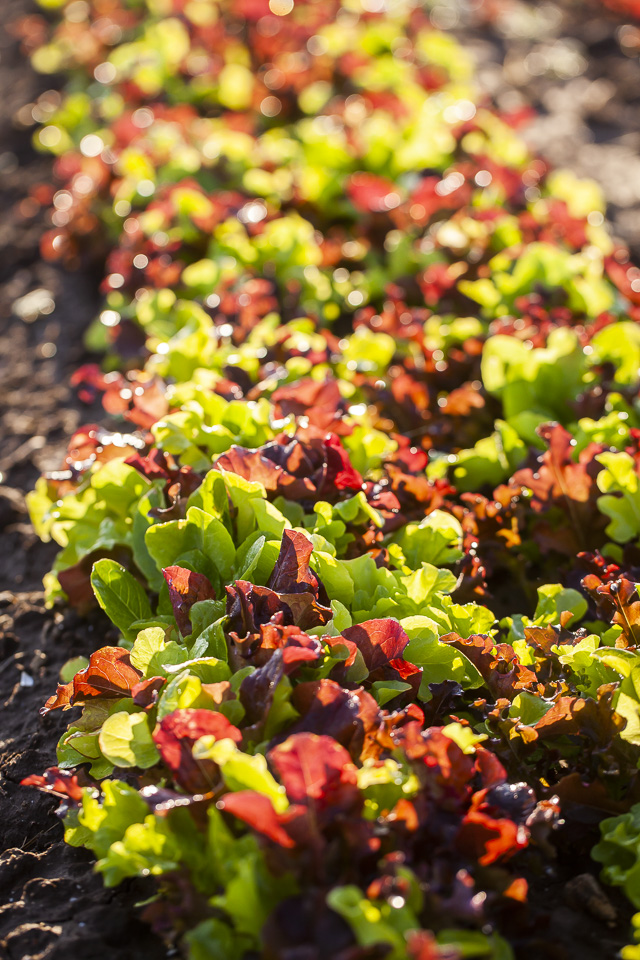 Photo by Scott David Gordon.
Photo by Scott David Gordon.
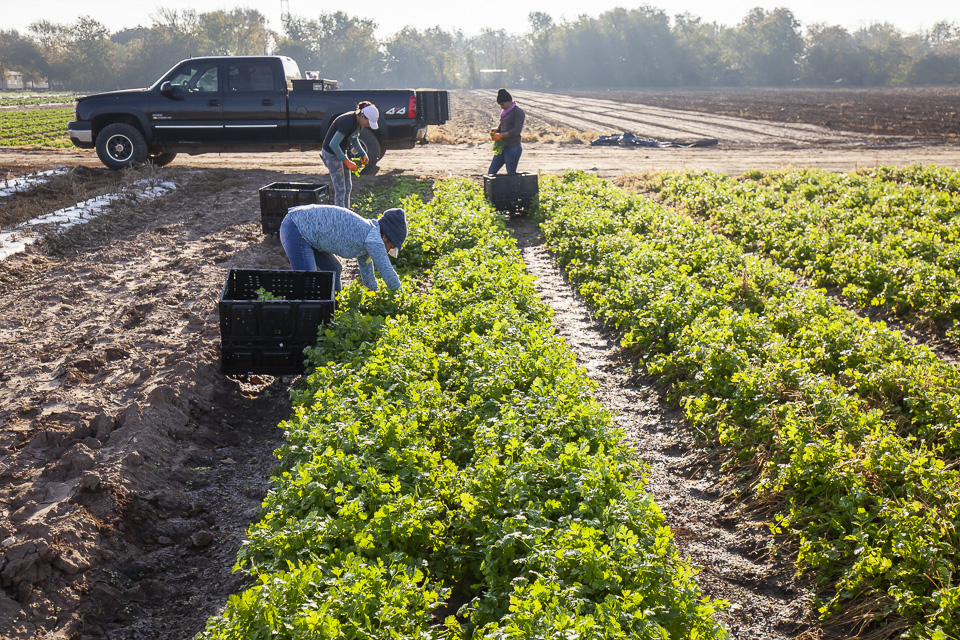 Might we suggest you make a salad. Photo by Scott David Gordon.
Might we suggest you make a salad. Photo by Scott David Gordon.
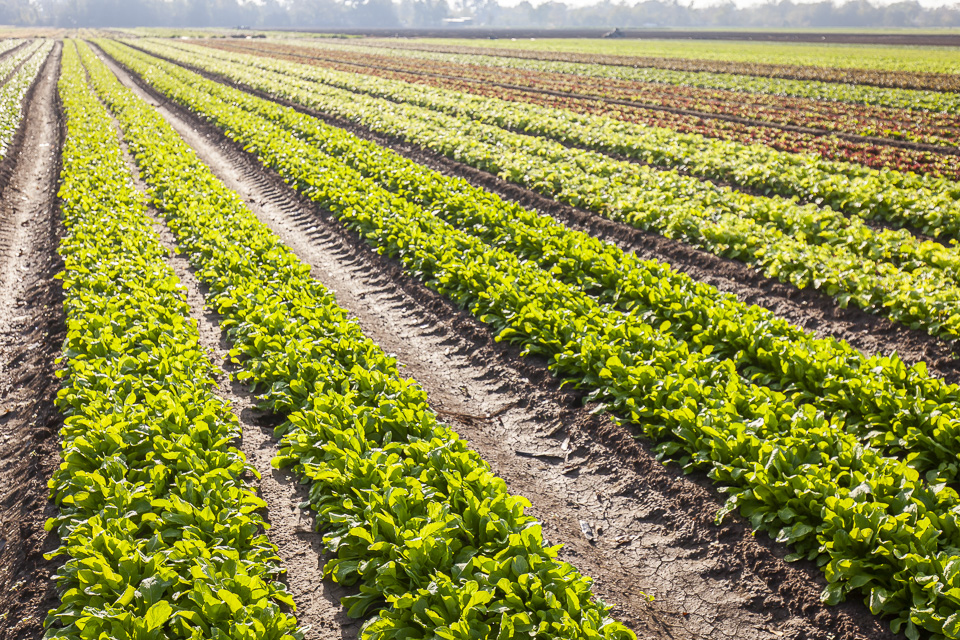 Verdant fields. Photo by Scott David Gordon.
Verdant fields. Photo by Scott David Gordon.
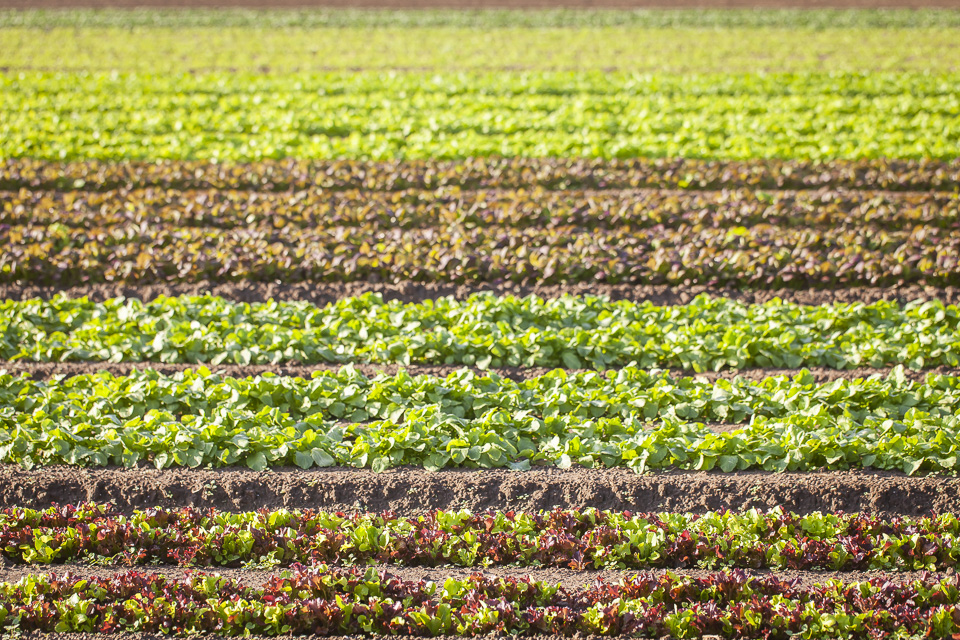 Gradients of greens. And purples. Photo by Scott David Gordon.
Gradients of greens. And purples. Photo by Scott David Gordon.
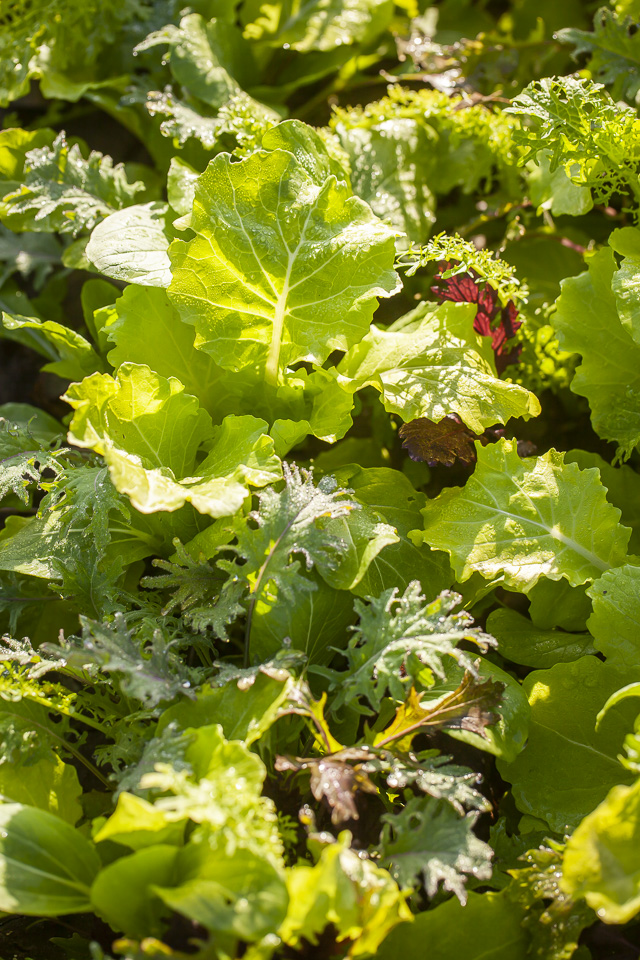 Photo by Scott David Gordon.
Photo by Scott David Gordon.
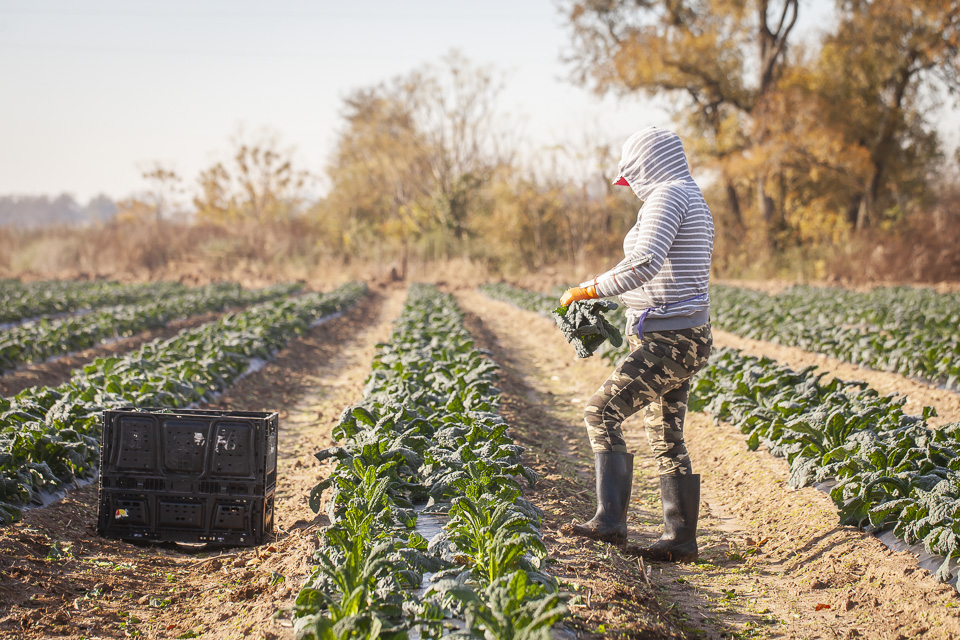 Last but not least, the kale. Photo by Scott David Gordon.
Last but not least, the kale. Photo by Scott David Gordon.
WEIRD THANKSGIVING FOOD, EXPLAINED
11/22/19 — Ada Broussard
Before we jump into some of the oddities of the Thanksgiving table, we wanted to remind you that the holiday is upon us. As if you could forget, but just in case. This means the JBG farm crew is taking the day off on Thursday, and our CSA delivery schedule will be a bit different next week. CSA Members, please make sure you’re aware of the changes to delivery schedules that can be seen here.
![]() To be clear, pie is not a weird Thanksgiving food. Pie is a perfect Thanksgiving food. Photo by Scott Gordon.
To be clear, pie is not a weird Thanksgiving food. Pie is a perfect Thanksgiving food. Photo by Scott Gordon.
We all know the American classics. Turkey, stuffing, rolls. Mashed potatoes, gravy and pumpkin pie. And then there are the oddballs - green bean and sweet potato casseroles. To a foreigner looking in, the addition of canned onion rings atop green beans and sugary marshmallows atop fresh sweet potatoes may be the most mind-boggling American tradition. As farmers, we grow food for a living. Our own Thanksgiving tables always reflect a balance of seasonal dishes (using the veggies that can actually thrive in Texas during this time of year) as well as some of the classics that we just can’t holiday without.
But if you want the turkey-day truth, many of the traditional dishes we know and love don’t quite reflect the Texas growing season in mid November. Potatoes, for example, are a spring crop for us Texan farmers. Might we suggest roasting and mashing some rutabaga or Hakurei turnips, instead. Slathered in gravy and mixed with butter, guests may not even notice the impostor. Pumpkins are a pain to grow during the fall due some mildew pressure and the short growing season, but you can make sweet potato pie that will fill this gap. Usual additions to stuffing include celery (almost impossible to grow in Texas, at any time), but diced chard stems or bok choy are an awesome, seasonal substitute. We know it sounds weird, just trust us. Green beans are not frost tolerant, and local green beans on a Thanksgiving table would require an unusually mild fall. Most farmers aren’t interested this degree of risk. We trust you’ll find the perfect balance this year between seasonal standards and old-time classics, but every year around this time we always wonder - if all of these vegetables are hard to grow at this time of year, how in the world did they manage to make their way onto the “classics” list? And where do the marshmallows come in? We’re taking a closer look at three such dishes.
Tourte of Pompion (Pumpkin) – Boile it with good milk, pass it through a straining pan very thick, and mix it with sugar, butter, a little salt and if you will, a few stamped almonds; let all be very thin. Put it in your sheet of paste; bake it. After it is baked, besprinkle it with sugar and serve.
![]() Stock photo of pumpkins grown by some other farm. We would have trouble growing this crop for a fall harvest.
Stock photo of pumpkins grown by some other farm. We would have trouble growing this crop for a fall harvest.
Fast forward to Civil War America when Abraham Lincoln made Thanksgiving an official national holiday. Pumpkins, which were a crop more easily grown in northern regions during the fall, were already a mainstay of unofficial Thanksgiving feasts. Though the holiday didn’t have as much of a stronghold in the South up until this point, after the institution of the official holiday, the pie, and feasting traditions in general, traveled southward. In 1928 Libby’s started canning pumpkin. And now the whole country is besprinkling this classic.
![]() One of our favorite JBG sweet potato photos of all time. Galdino won the lottery with this one!
One of our favorite JBG sweet potato photos of all time. Galdino won the lottery with this one!
Sweet potatoes are native to central and north America, and were eaten (and farmed) in the Americas long before any pilgrims boarded a ship. (On a side note, here is a really interesting article pointing to evidence that sweet potatoes traveled across the Pacific...on a boat… before Columbus even stepped foot in America. ). African slaves in the South gravitated towards the orange tuber as it resembled yams, a vegetable native to their homes, and the vegetable grew well in the warmer Southern climates. The vegetable rooted itself in southern kitchens, and after Thanksgiving officially became a holiday, traditions of sweet potatoes moved north (just as pies of pumpkin traveled south). In fact, many southerners used sweet potatoes in lieu of pumpkins to pie.
But why the sugary pillows of marsh? . According to Saveur, marshmallows, once an expensive candy for the elite, started to be mass-produced in 1917 and manufactures released recipe booklets for everyday marshmallow recipes (as if that should be a thing) and here the sweet potato marshmallow duo was born. “Right away, Americans divided on whether that was a good thing. Southerners appeared to respect sweet potatoes too much to pair them with candy.” . In this divide, we’d like to think that Southerns had the right idea. Over 100 years later, marshmallows are still a relevant Thanksgiving topping. If you just must, we do like this recipe. (Spoiler: marshmallows are used in moderation).
![]() See these potatoes? They were planted, picked, and washed by hand. Do you really want to bake them topped with candy?
See these potatoes? They were planted, picked, and washed by hand. Do you really want to bake them topped with candy?
![]() A beautiful harvest of JBG green beans. From May.
A beautiful harvest of JBG green beans. From May.
Which Thanksgiving classics can’t you live without? What seasonal veggies are gracing your table? If you share any photos on Facebook or Instagram, be sure to tag the farm (@jbgorganic) so we can see what you’re up to! As always, thanks for reading and happy Thanksgiving!
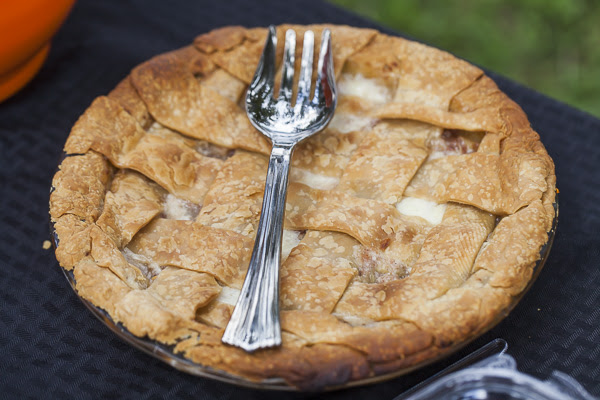 To be clear, pie is not a weird Thanksgiving food. Pie is a perfect Thanksgiving food. Photo by Scott Gordon.
To be clear, pie is not a weird Thanksgiving food. Pie is a perfect Thanksgiving food. Photo by Scott Gordon.
We all know the American classics. Turkey, stuffing, rolls. Mashed potatoes, gravy and pumpkin pie. And then there are the oddballs - green bean and sweet potato casseroles. To a foreigner looking in, the addition of canned onion rings atop green beans and sugary marshmallows atop fresh sweet potatoes may be the most mind-boggling American tradition. As farmers, we grow food for a living. Our own Thanksgiving tables always reflect a balance of seasonal dishes (using the veggies that can actually thrive in Texas during this time of year) as well as some of the classics that we just can’t holiday without.
But if you want the turkey-day truth, many of the traditional dishes we know and love don’t quite reflect the Texas growing season in mid November. Potatoes, for example, are a spring crop for us Texan farmers. Might we suggest roasting and mashing some rutabaga or Hakurei turnips, instead. Slathered in gravy and mixed with butter, guests may not even notice the impostor. Pumpkins are a pain to grow during the fall due some mildew pressure and the short growing season, but you can make sweet potato pie that will fill this gap. Usual additions to stuffing include celery (almost impossible to grow in Texas, at any time), but diced chard stems or bok choy are an awesome, seasonal substitute. We know it sounds weird, just trust us. Green beans are not frost tolerant, and local green beans on a Thanksgiving table would require an unusually mild fall. Most farmers aren’t interested this degree of risk. We trust you’ll find the perfect balance this year between seasonal standards and old-time classics, but every year around this time we always wonder - if all of these vegetables are hard to grow at this time of year, how in the world did they manage to make their way onto the “classics” list? And where do the marshmallows come in? We’re taking a closer look at three such dishes.
Pumpkin pie:
The earliest versions of this dish in association with autumnal celebrations were probably made with pumpkin, minus the pie. Specifically, whole pumpkins were likely hollowed, filled with delicious things (perhaps including milk + sugar), then cooked over an open flame. Some of the earliest records of pumpkins in more of a pie formation come from the French, specifically, from a recipe by the famous French cookbook author Francois Pierre La Varenne in 1653. Here is the English translation from the same year:Tourte of Pompion (Pumpkin) – Boile it with good milk, pass it through a straining pan very thick, and mix it with sugar, butter, a little salt and if you will, a few stamped almonds; let all be very thin. Put it in your sheet of paste; bake it. After it is baked, besprinkle it with sugar and serve.
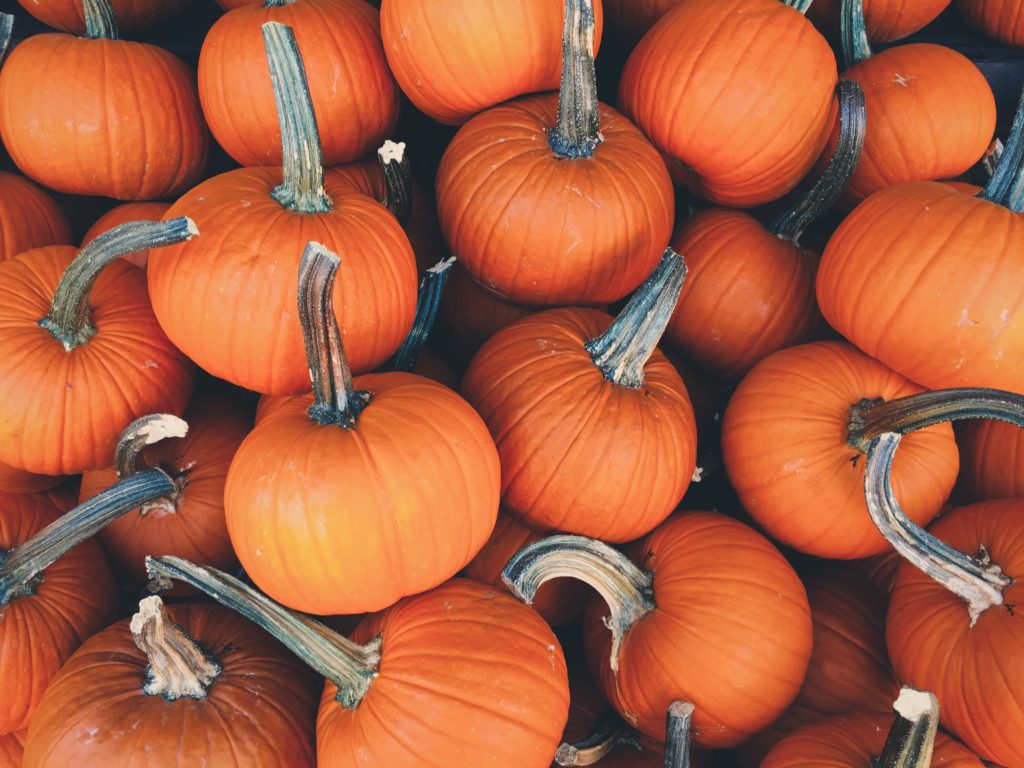 Stock photo of pumpkins grown by some other farm. We would have trouble growing this crop for a fall harvest.
Stock photo of pumpkins grown by some other farm. We would have trouble growing this crop for a fall harvest.
Fast forward to Civil War America when Abraham Lincoln made Thanksgiving an official national holiday. Pumpkins, which were a crop more easily grown in northern regions during the fall, were already a mainstay of unofficial Thanksgiving feasts. Though the holiday didn’t have as much of a stronghold in the South up until this point, after the institution of the official holiday, the pie, and feasting traditions in general, traveled southward. In 1928 Libby’s started canning pumpkin. And now the whole country is besprinkling this classic.
Sweet Potatoes + Marshmallows
Sweet potatoes are a favorite crop to grow here at JBG. Their leafy tops provide bunches of green in the hottest of summer days, and their roots sweet delight all through the fall. Sweet potatoes are carefully grown by planting “slips” Next, they are unearthed by a tractor, and picked up, one by one, by a farmer’s hand. We put some serious love into this crop. Please, we repeat, please, don’t cover this perfectly sweet-on-its-own vegetable in marshmallows. But if you must, at least know the origins: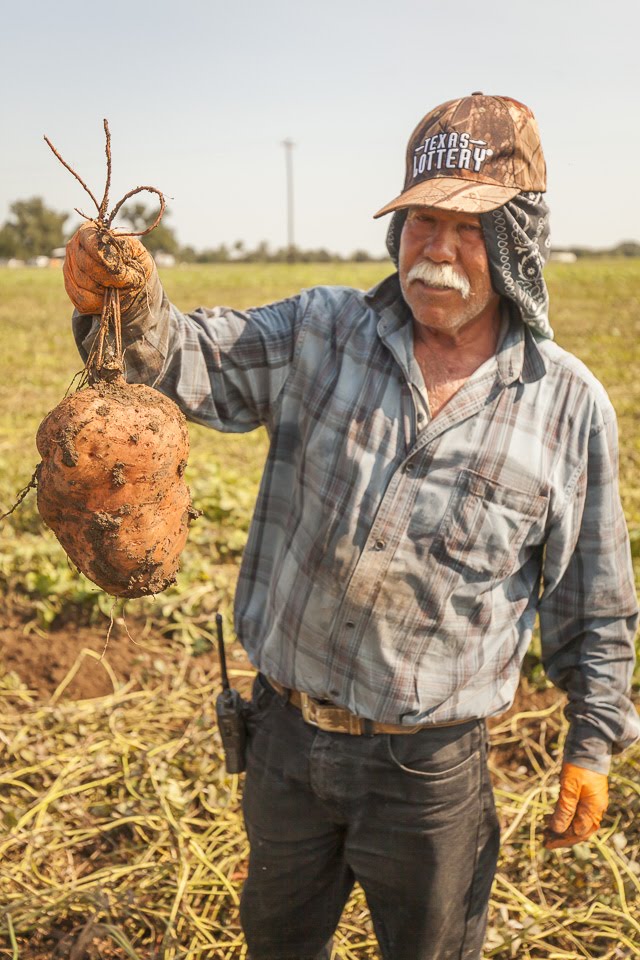 One of our favorite JBG sweet potato photos of all time. Galdino won the lottery with this one!
One of our favorite JBG sweet potato photos of all time. Galdino won the lottery with this one!
Sweet potatoes are native to central and north America, and were eaten (and farmed) in the Americas long before any pilgrims boarded a ship. (On a side note, here is a really interesting article pointing to evidence that sweet potatoes traveled across the Pacific...on a boat… before Columbus even stepped foot in America. ). African slaves in the South gravitated towards the orange tuber as it resembled yams, a vegetable native to their homes, and the vegetable grew well in the warmer Southern climates. The vegetable rooted itself in southern kitchens, and after Thanksgiving officially became a holiday, traditions of sweet potatoes moved north (just as pies of pumpkin traveled south). In fact, many southerners used sweet potatoes in lieu of pumpkins to pie.
But why the sugary pillows of marsh? . According to Saveur, marshmallows, once an expensive candy for the elite, started to be mass-produced in 1917 and manufactures released recipe booklets for everyday marshmallow recipes (as if that should be a thing) and here the sweet potato marshmallow duo was born. “Right away, Americans divided on whether that was a good thing. Southerners appeared to respect sweet potatoes too much to pair them with candy.” . In this divide, we’d like to think that Southerns had the right idea. Over 100 years later, marshmallows are still a relevant Thanksgiving topping. If you just must, we do like this recipe. (Spoiler: marshmallows are used in moderation).
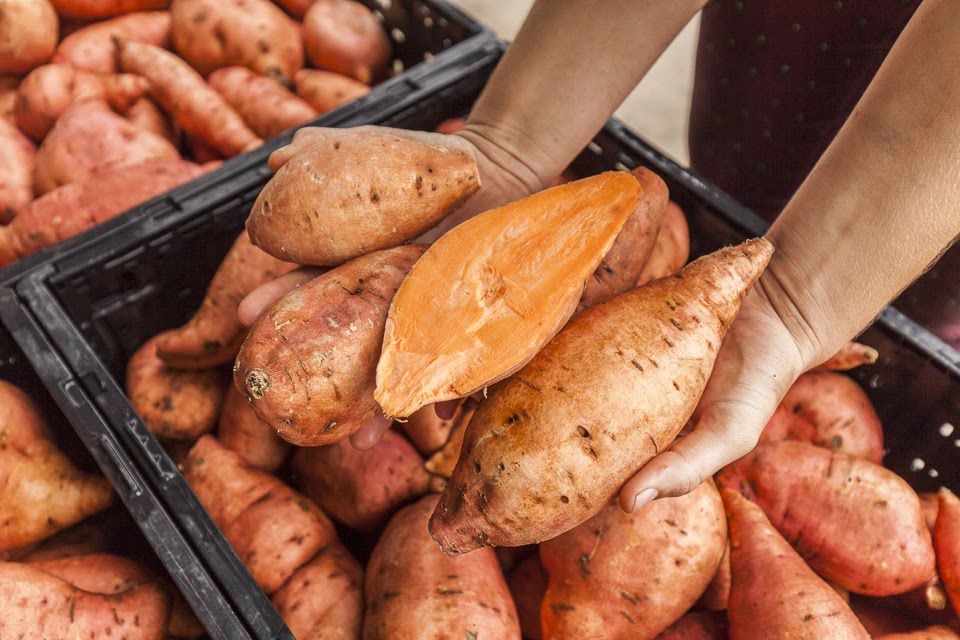 See these potatoes? They were planted, picked, and washed by hand. Do you really want to bake them topped with candy?
See these potatoes? They were planted, picked, and washed by hand. Do you really want to bake them topped with candy?
Green Bean Casserole
Unlike the indigenous roots of both pumpkins and sweet potatoes in the Americas, it may be of no surprise that the combination of canned soup, frozen beans, and fried onions is a more recent...invention. We have the 1950's and the Campbell's soup company to thank for this love-it or hate-it Thanksgiving side dish. In this post-war era, there were advancements in both freezing and canning technologies, and women were more and more often entering the work force. Once such woman, Dorcas Reilly, was managing the Campbell's Kitchen and came up with the classic and beloved combination of just seven ingredients: cream of mushroom soup, milk, soy sauce, pepper, canned or frozen green beans, and french-fried onions. Since this recipe’s inception, it’s held its spot on the Thanksgiving table, with Campbell estimating that 20 million Americans will consume the dish on Thanksgiving day. . We farmers need not scratch our heads any more about how heat-loving green beans occupy a seat of honor during a cool-weather holiday. They hail from a can. A beautiful harvest of JBG green beans. From May.
A beautiful harvest of JBG green beans. From May.
Which Thanksgiving classics can’t you live without? What seasonal veggies are gracing your table? If you share any photos on Facebook or Instagram, be sure to tag the farm (@jbgorganic) so we can see what you’re up to! As always, thanks for reading and happy Thanksgiving!
STEW
11/21/19 — Ada Broussard
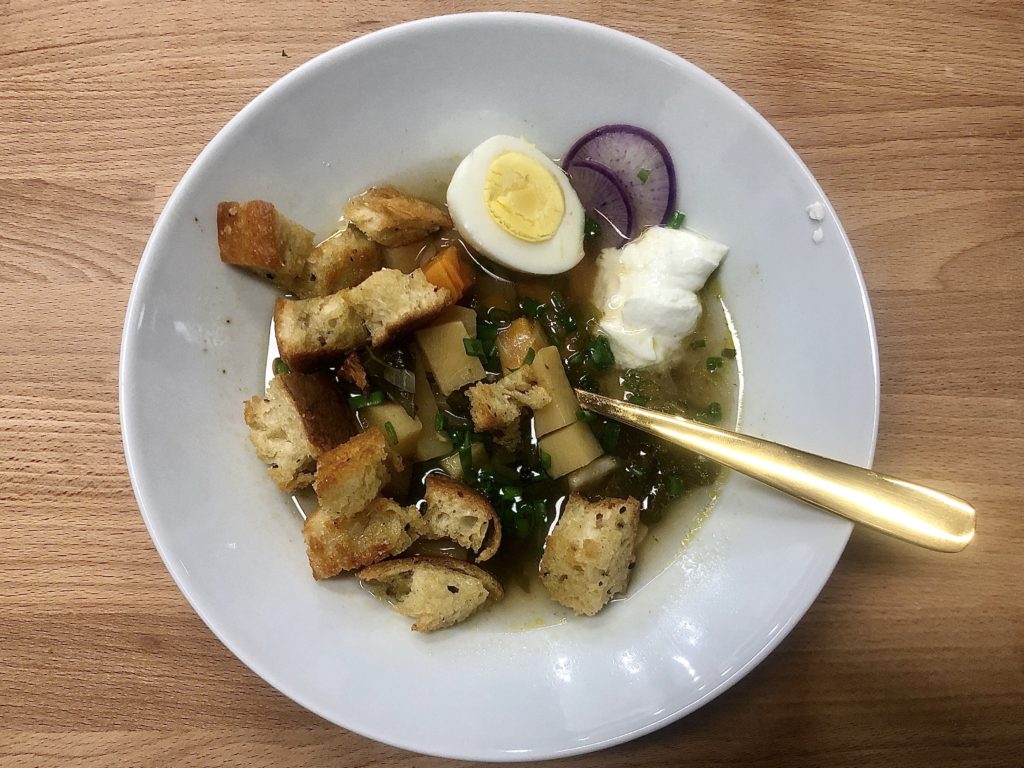 Stew night one at Club Home Made!
Stew night one at Club Home Made!
Recipe and photo by Megan Winfery.
Have you ever had one of those crazy busy weeks when you barely have time to eat (let alone cook), and then your CSA share arrives and you and think "How on EARTH am I going to make use of all this?!" If you're nodding your head like yep that's me I have one word for you - STEW! The humble pot of stew is just that - it doesn't like to brag - but it really is a one pot wonder that has nourished us humans since ancient times. Stew is healthy, delicious, versatile, and it practically cooks itself! Prep can be a little daunting if you dread chopping veggies, but I see it as a great opportunity to turn up some jams and give a bit of my time to the beautiful produce that is about to literally give me life. Another great way to get prepped is to attend a Club Homemade class, which is where I prepped this particular stew last Monday. Ada and Becky's cooking philosophy is absolutely inspirational and will change the way you cook. I can't recommend their meal prep club enough!
So you've got your CSA box or farmer's market haul and now it's time to wash and prep. Wash greens, root vegetable tops and herbs thoroughly in a salad spinner or a bowl of cool water then lay them out on a tea towel to dry completely. Peel or wash root vegetables and rinse off other items such as peppers. Properly store the produce that won't be going into the stew pot and get ready to prep everything else for their broth bath. If you see fit, you can cook your entire CSA share into one big pot of as stew meal prep or to freeze for a rainy day. A pot of stew can be as large or small as you like!
Here is the basic formula for stew that you can perpetually modify:
1. Coat the bottom of a large pot with oil or fat and set to medium heat on the stove.
2. Add diced aromatics like garlic, onion, and peppers and soften.
3. Add any meat you might be using and cook completely.
4. Stir in cubed root vegetables like carrots, turnips, rutabagas, potatoes, beets, turnips, and radish + any hearty herbs like thyme, oregano, and rosemary.
5. Add seasoning of your choice and make sure salt is one of them.
6. Let everything soften and meld together for about 10 minutes, then add your broth of choice. Use water if you don't have broth or enough to cover everything completely.
7. Bring to a simmer for the next 35-40 minutes, stirring occasionally, until the vegetables are fork tender.
8. Remove from heat and add any soft herbs like cilantro, parsley, dill, and chives.
Serve with accoutrements like crusty croutons, soft boiled egg, Greek yogurt, dumplings, rice, or egg noodles. Stew stays good in the fridge (gets better, really) for a week and freezes very well!
CSA BOX CONTENTS WEEK OF NOV 18TH
11/19/19 — Scott
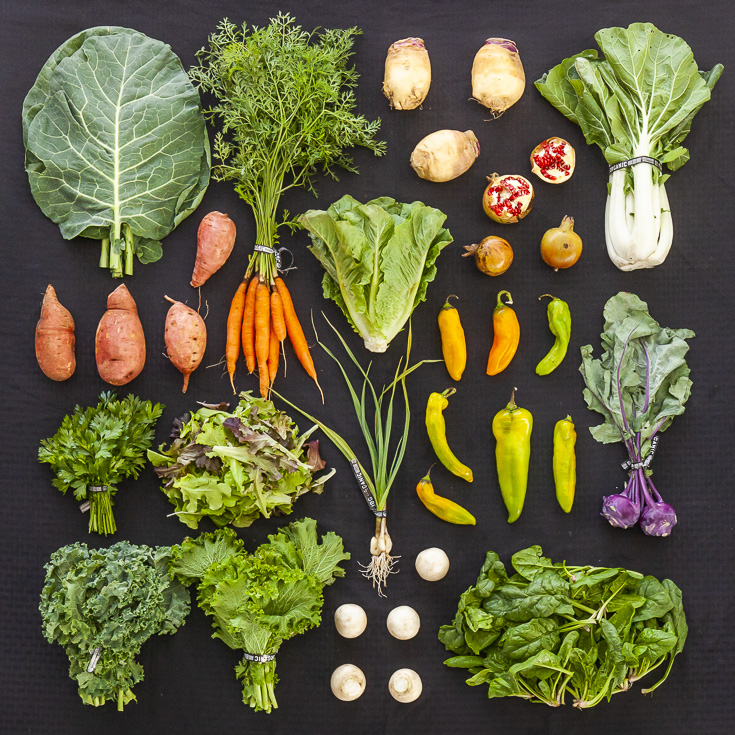 CSA Box Contents Week of Nov 18th
CSA Box Contents Week of Nov 18th
Large Box
Carrots X 2
Greens, Collards X 2
Greens, Kale, Curly
Greens, Spinach
Herb, Parsley, Flat
Onion, Multiplying
Potato X 2
Potato, Sweet
Radish
Turnip, White Japanese
Carrots X 2
Greens, Collards X 2
Greens, Kale, Curly
Greens, Spinach
Herb, Parsley, Flat
Onion, Multiplying
Potato X 2
Potato, Sweet
Radish
Turnip, White Japanese
Medium Box
Carrots X 2
Greens, Collards X 2
Greens, Spinach
Herb, Parsley, Flat
Onion, Multiplying
Potato X 2
Potato, Sweet
Radish
Turnip, White Japanese
Carrots X 2
Greens, Collards X 2
Greens, Spinach
Herb, Parsley, Flat
Onion, Multiplying
Potato X 2
Potato, Sweet
Radish
Turnip, White Japanese
Small Box
Carrots
Greens, Collards
Greens, Spinach
Herb, Parsley, Flat
Onion, Multiplying
Potato, Sweet
Turnip, White Japanese
Carrots
Greens, Collards
Greens, Spinach
Herb, Parsley, Flat
Onion, Multiplying
Potato, Sweet
Turnip, White Japanese
Individual Box
Carrots
Greens, Collards
Greens, Spinach
Onion, Multiplying
Potato, Sweet
Turnip, White Japanese
Carrots
Greens, Collards
Greens, Spinach
Onion, Multiplying
Potato, Sweet
Turnip, White Japanese
SHARE THE BOUNTY
11/15/19 — Ada Broussard
Before we jump into this week’s post, some important schedule changes for the week of Thanksgiving, only.
![]() It's a bountiful time of year; consider sharing part of your harvest!
It's a bountiful time of year; consider sharing part of your harvest!
Bumper crop bounty. Boxes overflowing with a cornucopia of vegetables. Refrigerators stocked with a colorful array of organic produce, and a bowl of sweet potatoes on the counter. If you’re reading this, you’re likely a customer of ours, maybe a CSA Member, and we hope this describes your current vegetable inventory. The fall is one of the most plentiful seasons here in Texas!
Today, we’re writing to ask you to consider sharing this bounty with those in our community who could use a little more fresh produce in their lives and diets. Specifically, we wanted to draw attention to our Sponsored Share Program.
![]() Going out of town for the holidays? Consider donating your CSA share instead of postponing it!
Going out of town for the holidays? Consider donating your CSA share instead of postponing it!
Since January of 2012, with the help of our CSA Members and patrons, we’ve been sending weekly boxes of vegetables to two local organizations: The Settlement Home and SAFE Alliance. We did some quick back-of-the-napkin math, and over the past 7 and a half years, we’ve delivered around 1,245 boxes of fresh produce to The Settlement Home… that’s around 18,720 pounds of organic vegetables! The number is about the same at SAFE Alliance. These vegetables are integrated into the programming of both of these organizations. At The Settlement Home, for example, these veggies are available to the girls and young women who live on the premises at one of the organization's amazing group homes. Here, girls ages 7 through 18 live with a house mom. These homes are focused on building life skills in a more independent environment that will prepare the girls for life on their own or being integrated back into a family situation. The girls have a robust schedule chock full of recreational activities, and are out in the community on a regular basis. They also plan and cook meals together; this is where our veggies come in! Each week, residents at the Settlement Home have access to our fresh veggies as a part of their pantry staples, and vegetables are incorporated into shared meals and cooking classes.
![]() One of the group kitchens at the Settlement Home. This is where our veggies are prepared and shared!
One of the group kitchens at the Settlement Home. This is where our veggies are prepared and shared!
We are so proud of this long-standing partnership with these Austin organizations, but we could not do this without your help. So far this year, 77 of you have donated 141 shares. If you are one of these 77 folks and are reading this, thank you! But we still have a ways to go. Specifically, we usually send 156 boxes to Safe Alliance every year and 156 boxes to The Settlement Home - that’s 312 total boxes annually, meaning we need another 171 shares to cover this year’s needs. So hear us out: If you need to postpone your share for the busy holiday season, please consider donating it instead. Traveling work work? Consider donating instead of postponing. All you need to do is email Faith (farm@jbgorganic.com) and let her know that you’d like to donate your share for a particular date. You can do this at any point in the year, but we find that many of you travel for the holidays, hence our usual ask this time of year.
If you need all of your veggies but would still like to donate, you can simply purchase a share to go to the Settlement Home or Safeplace on this page. And if you’re wondering what to get your friend or family member who has it all, you can donate a share of vegetables on their behalf. We’ll send them a card letting them know.
![]() CSA Boxes headed to the Settlement Home.
CSA Boxes headed to the Settlement Home.
We sincerely appreciate your support of our Sponsored Share Program. But did you know that’s not the only way our veggies make their way onto the plates of those in need? Every Tuesday, and sometimes on Fridays, too, the Central Texas Food Bank’s semi truck makes its way to our packing shed where it’s loaded up with pallets of donated produce. The vegetables that we donate are unsellable for one reason or another - sweet potatoes that were too big and scary-looking for customers to buy (true story) or bunched turnips with green tops that are a bit yellowed. All the produce is 100% edible, and just as nutritious as their glamour-shot-worthy cousins.
![]() Photograph of Inglorious JBG produce by Kenny Brahn for Food + City for their article titled The Hunt for Food Waste. https://foodandcity.org/hunt-food-waste/
Photograph of Inglorious JBG produce by Kenny Brahn for Food + City for their article titled The Hunt for Food Waste. https://foodandcity.org/hunt-food-waste/
These less-photogenic but equally-as-tasty vegetables are distributed through CTFB’s pantry. And when we say pantry, we actually mean a 135,000 square foot facility where many local food banks go to fill their shelves and procure ingredients for their soup, so to speak. Some of the produce gets cooked up in CTFB’s industrial kitchen as a part of their Value Added Meals Program and Nutrition classes. No matter which arm of the food bank our vegetables are funneled, the important part is they get used. Partnering with the CTFB to distribute our inglorious produce is one of the main ways we nearly eliminate food waste at JBG. Wondering what happens to the produce that isn’t suitable for the food bank? It goes to a hog farmer. Zero percent of our produce ends up in a landfill, which, believe it or not is a thing that happens at some farms.
Last year we donated 120,616 pounds of produce, and this year we’ve already toppled that number! Since the beginning of 2019, we’ve donated 177,715 pounds of produce, which works itself out to be around 148,095 meals. Considering there are millions of Texans who are considered food insecure, this is just a small portion of the nutrient dense and healthy food needed to help feed our neighbors.
![]()
![]() (Above) Each week the CTFB pulls up in this large semi truck to scoop up farm-fresh veggies. (Below) Stats and images courtesy of the Central Texas Food Bank. To see more figures about hunger in our state, visit the "Learn More" section of their website.
(Above) Each week the CTFB pulls up in this large semi truck to scoop up farm-fresh veggies. (Below) Stats and images courtesy of the Central Texas Food Bank. To see more figures about hunger in our state, visit the "Learn More" section of their website.
If you feel like you have a bounty this season and would like to support the efforts of our amazing food bank, consider checking out their upcoming Empty Bowl Event (it’s one of our favorite fundraising events of the year!), signup up for one of their many volunteer opportunities, or simply contributing monetarily.![]()
Our weekly volunteers sometimes help us sort donations for CTFB.
- All Houston deliveries will be made on Monday, November 25th.
- All Thursday Austin Pickups and Thursday Home Deliveries will be made on Wednesday, November 27th.
- All DFW deliveries usually made on Thursdays will be delivered on Tuesday, November 26th.
- All DFW deliveries usually made on Fridays will be delivered on Wednesday, November 27th.
Sponsor A Share
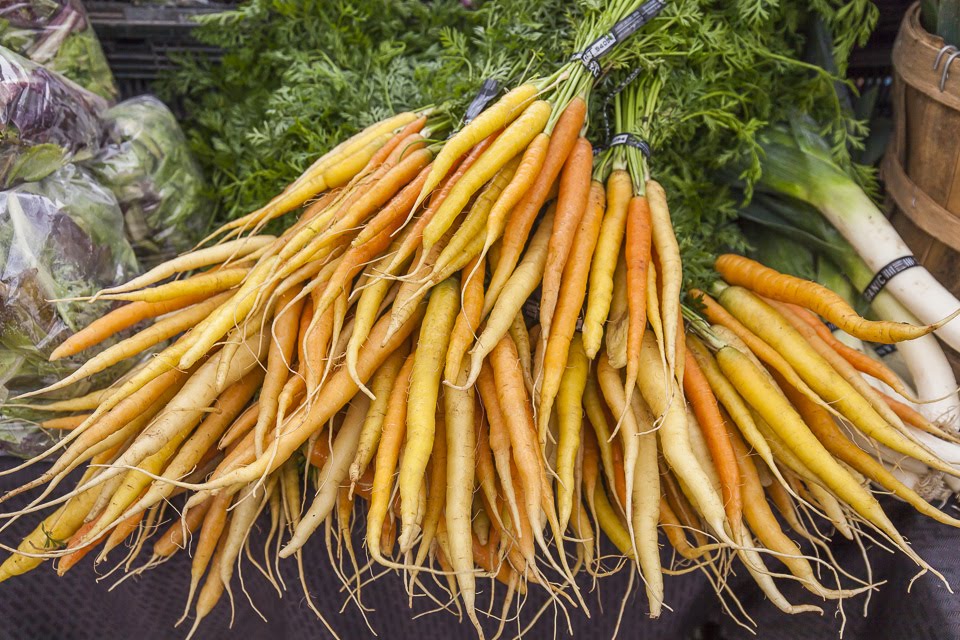 It's a bountiful time of year; consider sharing part of your harvest!
It's a bountiful time of year; consider sharing part of your harvest!
Bumper crop bounty. Boxes overflowing with a cornucopia of vegetables. Refrigerators stocked with a colorful array of organic produce, and a bowl of sweet potatoes on the counter. If you’re reading this, you’re likely a customer of ours, maybe a CSA Member, and we hope this describes your current vegetable inventory. The fall is one of the most plentiful seasons here in Texas!
Today, we’re writing to ask you to consider sharing this bounty with those in our community who could use a little more fresh produce in their lives and diets. Specifically, we wanted to draw attention to our Sponsored Share Program.
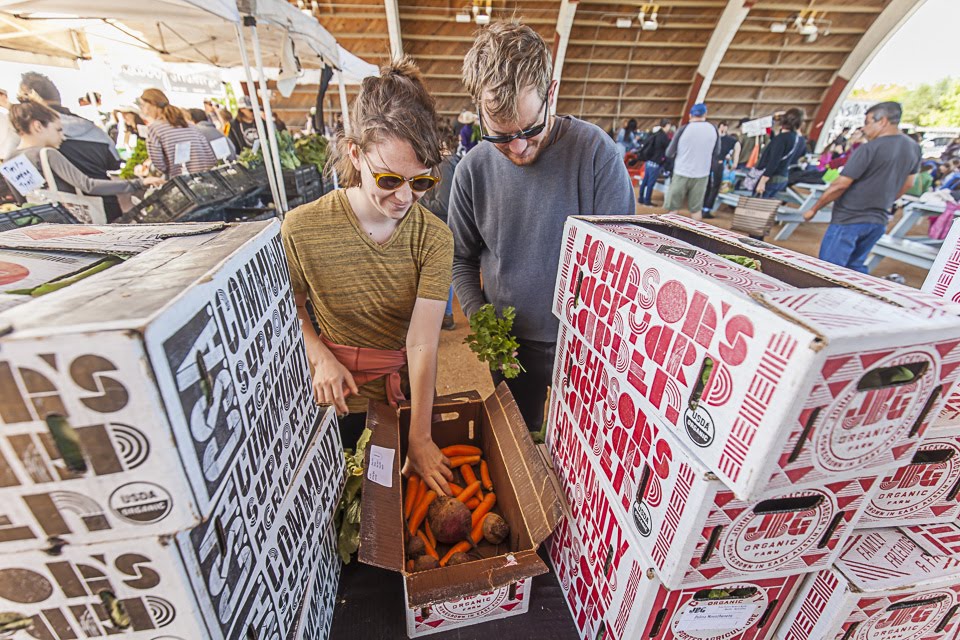 Going out of town for the holidays? Consider donating your CSA share instead of postponing it!
Going out of town for the holidays? Consider donating your CSA share instead of postponing it!
Since January of 2012, with the help of our CSA Members and patrons, we’ve been sending weekly boxes of vegetables to two local organizations: The Settlement Home and SAFE Alliance. We did some quick back-of-the-napkin math, and over the past 7 and a half years, we’ve delivered around 1,245 boxes of fresh produce to The Settlement Home… that’s around 18,720 pounds of organic vegetables! The number is about the same at SAFE Alliance. These vegetables are integrated into the programming of both of these organizations. At The Settlement Home, for example, these veggies are available to the girls and young women who live on the premises at one of the organization's amazing group homes. Here, girls ages 7 through 18 live with a house mom. These homes are focused on building life skills in a more independent environment that will prepare the girls for life on their own or being integrated back into a family situation. The girls have a robust schedule chock full of recreational activities, and are out in the community on a regular basis. They also plan and cook meals together; this is where our veggies come in! Each week, residents at the Settlement Home have access to our fresh veggies as a part of their pantry staples, and vegetables are incorporated into shared meals and cooking classes.
 One of the group kitchens at the Settlement Home. This is where our veggies are prepared and shared!
One of the group kitchens at the Settlement Home. This is where our veggies are prepared and shared!
We are so proud of this long-standing partnership with these Austin organizations, but we could not do this without your help. So far this year, 77 of you have donated 141 shares. If you are one of these 77 folks and are reading this, thank you! But we still have a ways to go. Specifically, we usually send 156 boxes to Safe Alliance every year and 156 boxes to The Settlement Home - that’s 312 total boxes annually, meaning we need another 171 shares to cover this year’s needs. So hear us out: If you need to postpone your share for the busy holiday season, please consider donating it instead. Traveling work work? Consider donating instead of postponing. All you need to do is email Faith (farm@jbgorganic.com) and let her know that you’d like to donate your share for a particular date. You can do this at any point in the year, but we find that many of you travel for the holidays, hence our usual ask this time of year.
If you need all of your veggies but would still like to donate, you can simply purchase a share to go to the Settlement Home or Safeplace on this page. And if you’re wondering what to get your friend or family member who has it all, you can donate a share of vegetables on their behalf. We’ll send them a card letting them know.
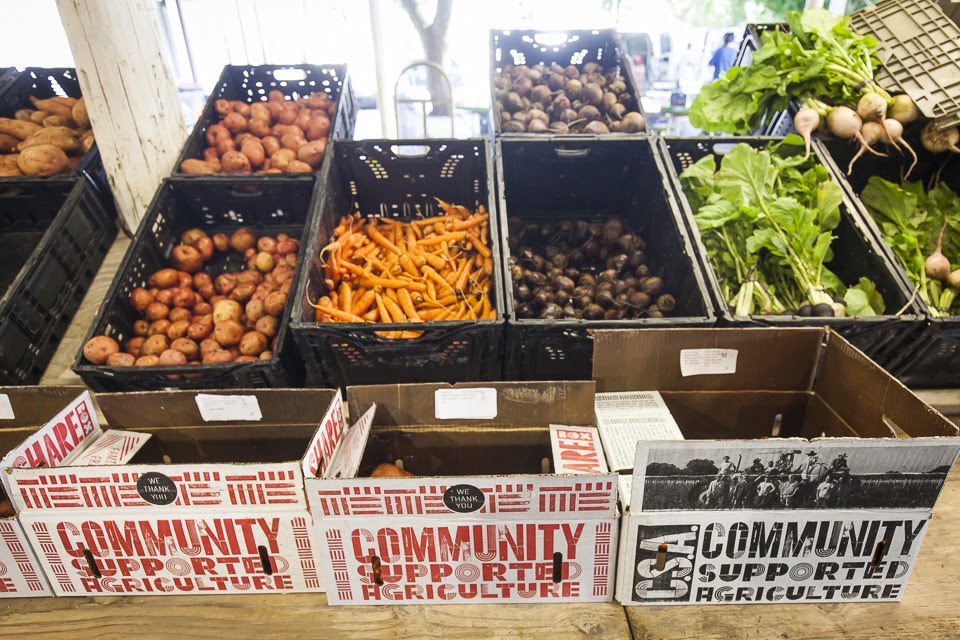 CSA Boxes headed to the Settlement Home.
CSA Boxes headed to the Settlement Home.
JBG + The Central Texas Food Bank
We sincerely appreciate your support of our Sponsored Share Program. But did you know that’s not the only way our veggies make their way onto the plates of those in need? Every Tuesday, and sometimes on Fridays, too, the Central Texas Food Bank’s semi truck makes its way to our packing shed where it’s loaded up with pallets of donated produce. The vegetables that we donate are unsellable for one reason or another - sweet potatoes that were too big and scary-looking for customers to buy (true story) or bunched turnips with green tops that are a bit yellowed. All the produce is 100% edible, and just as nutritious as their glamour-shot-worthy cousins.
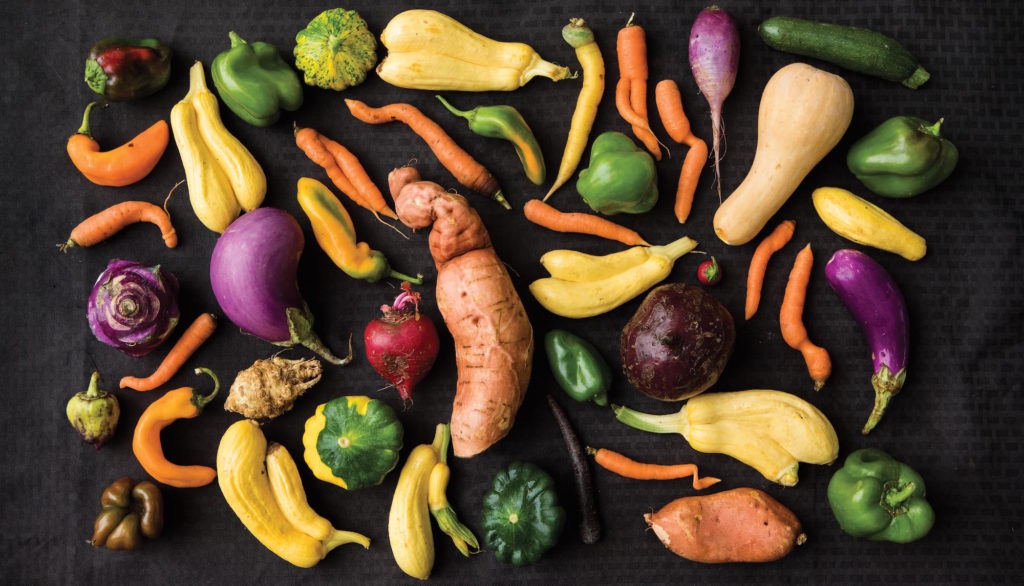 Photograph of Inglorious JBG produce by Kenny Brahn for Food + City for their article titled The Hunt for Food Waste. https://foodandcity.org/hunt-food-waste/
Photograph of Inglorious JBG produce by Kenny Brahn for Food + City for their article titled The Hunt for Food Waste. https://foodandcity.org/hunt-food-waste/
These less-photogenic but equally-as-tasty vegetables are distributed through CTFB’s pantry. And when we say pantry, we actually mean a 135,000 square foot facility where many local food banks go to fill their shelves and procure ingredients for their soup, so to speak. Some of the produce gets cooked up in CTFB’s industrial kitchen as a part of their Value Added Meals Program and Nutrition classes. No matter which arm of the food bank our vegetables are funneled, the important part is they get used. Partnering with the CTFB to distribute our inglorious produce is one of the main ways we nearly eliminate food waste at JBG. Wondering what happens to the produce that isn’t suitable for the food bank? It goes to a hog farmer. Zero percent of our produce ends up in a landfill, which, believe it or not is a thing that happens at some farms.
Last year we donated 120,616 pounds of produce, and this year we’ve already toppled that number! Since the beginning of 2019, we’ve donated 177,715 pounds of produce, which works itself out to be around 148,095 meals. Considering there are millions of Texans who are considered food insecure, this is just a small portion of the nutrient dense and healthy food needed to help feed our neighbors.

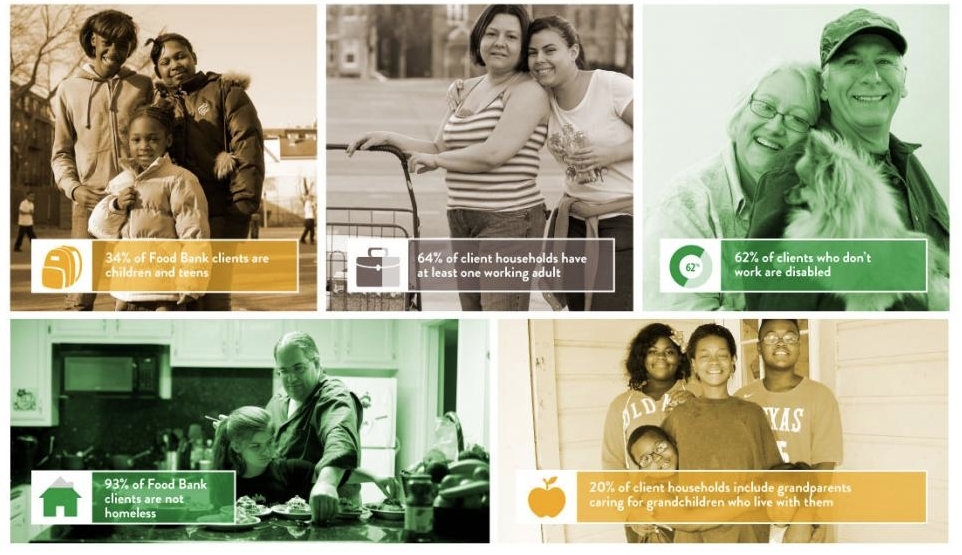 (Above) Each week the CTFB pulls up in this large semi truck to scoop up farm-fresh veggies. (Below) Stats and images courtesy of the Central Texas Food Bank. To see more figures about hunger in our state, visit the "Learn More" section of their website.
(Above) Each week the CTFB pulls up in this large semi truck to scoop up farm-fresh veggies. (Below) Stats and images courtesy of the Central Texas Food Bank. To see more figures about hunger in our state, visit the "Learn More" section of their website.
If you feel like you have a bounty this season and would like to support the efforts of our amazing food bank, consider checking out their upcoming Empty Bowl Event (it’s one of our favorite fundraising events of the year!), signup up for one of their many volunteer opportunities, or simply contributing monetarily.
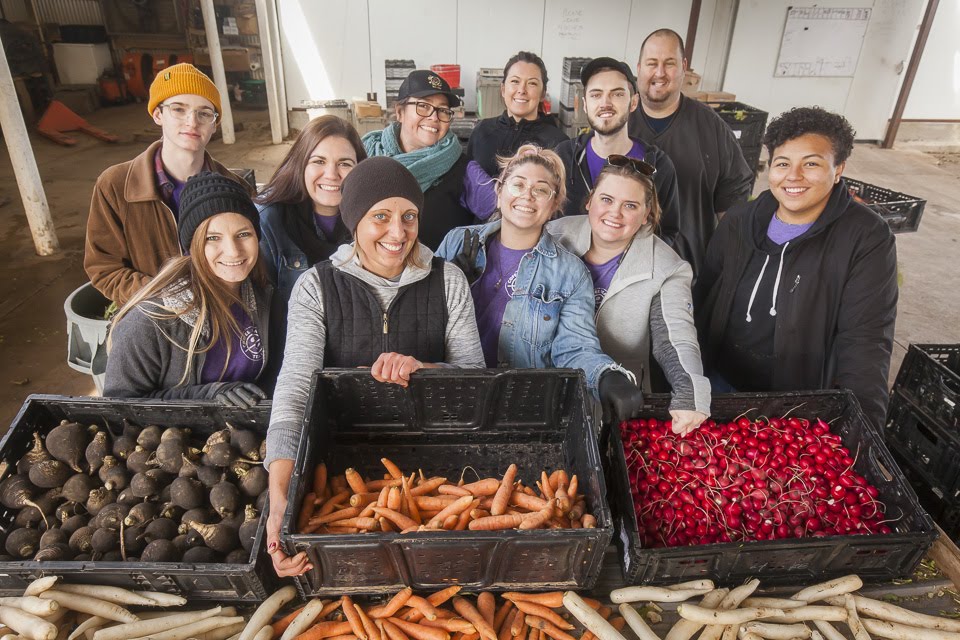
Our weekly volunteers sometimes help us sort donations for CTFB.
ITALIAN PICKLED VEGETABLES
11/13/19 — Ada Broussard
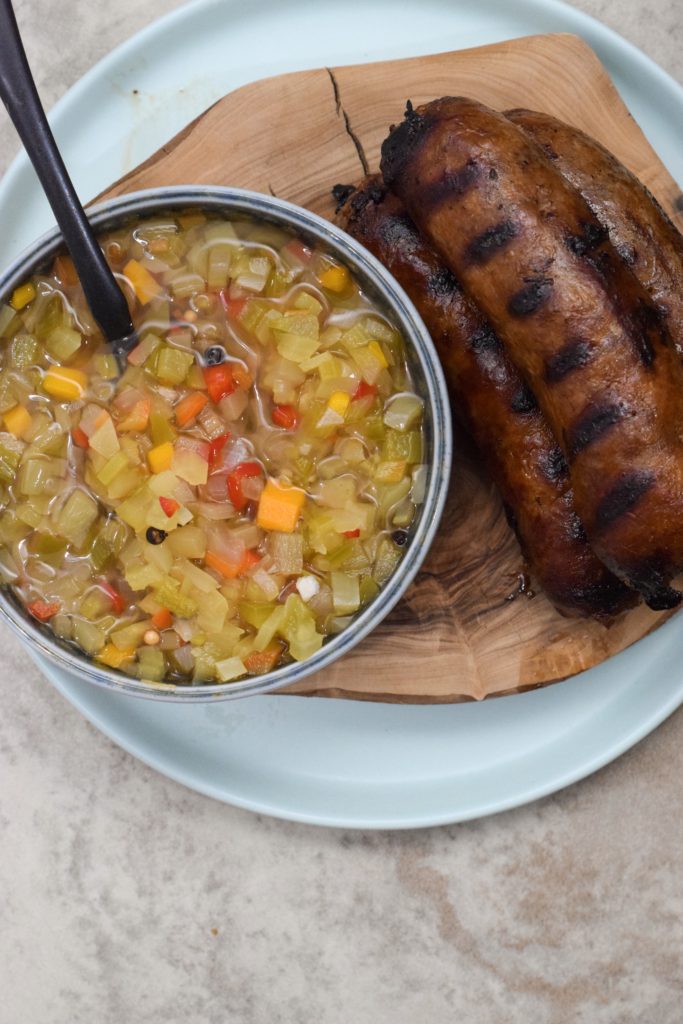
Author: The Migoni Kitchen
Servings: 2 Large Mason Jars
Total Time: 20 minutes
Ingredients
- 1 ¼ cup Diced Mixed Peppers (Mix of sweet and spicy, deseed hot peppers for milder mix)
- ¼ lb Carrots, diced
- ¼ lb Celery, diced
- ¼ lb Onion, diced
- 6 cloves of Garlic, minced
- 2 cups White Vinegar
- 2 Cups Water
- 2 Tablespoons Whole Black Peppercorns
- 1 Tablespoon Mustard Seeds
- 3 Tablespoons Kosher Salt
- 3 Tablespoons Granulated Sugar
- 4 Bay Leaves
- 2 Large Sprigs of Oregano
While waiting for the liquid to boil, combine the vegetables, peppercorns, and mustard seeds and evenly distribute into two 32 ounce mason jars.
Add 2 bay leaves and 1 sprig of oregano into each jar and then pour the hot brining liquid over, leaving about ½ inch of empty space from the rim
If you are planning to use the pickle mix within 1-2 weeks, securely cap and allow to cool before storing in the refrigerator.
If planning to store, fill a pot with 3-4 inches of water and bring to a boil. Place the mason jar in the boiling water and allow the jar to boil for about 10 minutes. Remove from heat and allow to cool and store at room temperature.







 0 ITEMS IN CART
0 ITEMS IN CART 

